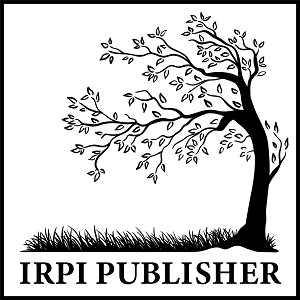ADDITIONAL MENU
The Use of Satellite Imagery Data for Poverty Clustering at the District Level Administration in Indonesia
Abstract
Poverty is a problem that will never be separated from every country, including Indonesia. One of the efforts that can be taken to reduce poverty is to carry out comprehensive monitoring of data related to poverty. The use of satellite imagery strongly supports this effort. Data taken to describe poverty in a region are CO, SO2, NO2, Night Time Light (NTL), Land Surface Temperature (LST), Normalized Difference Vegetation Index (NDVI), Normalized Difference Built-up Index (NDBI), also per capita expenditure data that can be accessed through the BPS website. Based on the theory, all of these variables negatively affect the poverty of a region except for the NDVI variable. The use of clustering with K-Means method can be implemented in this situation in order to cluster poverty in every district in Indonesia. Then it is supported by a descriptive analysis of each variable in order to describe the distribution of variables in each district in Indonesia. Based on the clustering results, it can be seen that there are 2 clusters, namely cluster 1 which shows a cluster with low poverty and cluster 2 with high poverty. There are a total of 46 districts included in cluster 1, which constitute the majority of economic centers in it's region, and 468 other districts included in cluster 2. The results of this clustering are expected to be used by stakeholders in making decisions according to the characteristics of the district.
Keywords
Clusterization; District Level; K-Means; Poverty; Satellite Imagery
Full Text:
PDFReferences
Sano AVD, Nindito H. Application Of K-Means Algorithm For Cluster Analysis On Poverty Of Provinces In Indonesia. ComTech. 2016; 7(2): 141-150.
Idrus S, Rosida L. Poverty In Indonesia : Critical Review. Archives of Business Research. 2020; 8(6): 127-132.
Shi K, Chang Z, Chen Z, Wu J, Yu B. Identifying and Evaluating Poverty Using Multisource Romote Sensing and Point of Interest (POI) Data : A Case Study of Chongqing, China. J. Clean. Prod. 2020; 255, 120245.
Ghose T, Anderson SJ, Elvidge CD, Sutton PC. Using Nighttime Satellite Imagery as a Proxy Measure of Human Well-Being. Sustainability. 2013; 5: 4988-5019.
Zhao N, Liu Y, Cao G, Samson EL, Zhang J. Forecasting China's GDP at the Pixel Level Using Nighttime Light Time Series and Population Images. GISci. Remote Sens. 2017; 54: 407-425.
Yu B, et al. Urban Built-up Area Extraction from Log-Transformed NPP-VIIRS Nighttime Light Composite Data. IEEE Geosci. 2018; 15: 1279-1283.
Yin J, Qiu Y, Zhang B. Identification of Poverty Areas by Remote Sensing and Machine Learning : A Case Study in Guizhou, Southwest China. ISPRS Int. J. Geo-Inf. 2020; 10: 11.
Sapena M, Ruiz LA, Taubenbock H. Analyzing Links between Sapio-Temporal Metrics of Built-up Areas and Socio-Economic Indicators on a Semi-Global Scale. ISPRS Int. J. Geo-Inf. 2020; 9: 436.
Dawson T, Sandoval JS, Sagan V, Crawford T. A Spatial Analysis of Relationship between Vegetation and Poverty. ISPRS Int. J. geo-Inf. 2018; 7: 83.
Maurya R, Gupta PR, Sharma MK. Builtding Extraction from Very High Resolution Multispectral Images Using NDVI Based Segmentation and Morphological Operators. In Proceedings of the IEEE-International Conference on Advances In Engineering, Science and Management (ICAESM-2012), Nagapattinam, India. 2012; 577-581.
Putri SR, Wijayanto AW, Sakti DA. Developing Relative Spatial Poverty Index Using Integrated Remote Sensing and Geospatial Big Data Approach: A Case Study of East Java, Indonesia. ISPRS Int. J. Geo-Inf. 2022; 11: 275.
Zha Y, Ghao J, Ni S. Use of normalized difference built-up index in automatically mapping urban areas from TM imagery. Int. J. Rem. Sens. 2003; 24 (3): 583–594.
Mia B, Bhattacharya R, Woobaidullah ASM. Correlation and Monitoring of Land Surface temperature, Urban Heat Island with land Use-land Cover of Dhaka City using Satellite Imageries. Int. J. Res. Geogr. 2017; 3: 10-20.
Wang B, Tian J, Yang P, He B. Multi-Scale Features of Regional Poverty and The Impact of Geographic Capital : A case Study of Yanbian Korean Autonomous Prefecture in Jilin Province, China. Land. 2021; 10: 1406.
Han C, Gu Z, Yang H. EKC Test of the Relationship between Nitrogen Dioxide Pollution and Ecconomic Growth- A Spatial Economic Analysis Based on Chinese City Data. Int. J. Environ. Res. Public Health. 2021; 18: 9697.
Bakash K, Akmal T, Ahmad T, Abbas Q. Investigating the Nexus among Sulfur Dioxade Emmision, Energy Consumption, and Economic Growth: Empirical Evidence from Pakistan. Environ. Sci. Pollut. Res. 2022; 29: 7214-7224.
Cammeraat E. The relationship between different social expenditure schemes and poverty, inequality and economic growth. International Social Security Review. 2020; 73(2): 101-123.
Wulandari I, Pratama AAN. Analisis Pengaruh Dana ZIS (Zakat, Infak, Sedekah), Pertumbuhan Ekonomi, Angka Harapan Hidup, Rata-Rata Lama Sekolah dan Pengeluaran Perkapita Terhadap Tingkat Kemiskinan di Indonesia Periode 2010-2021. Jurnal Ilmiah Ekonomi Islam. 2022; 8(3): 3301-3309.
Han J, Kamber M, Pei J. Data Mining Concept and Techniques. Elsevier. 2012.
Zaki MJ, Meira W. Data Mining and Analysis. Fundamental Conceps and Algorithms. Cambridge University Press. 2014.
Kumar L, Mutanga O. Google Earth Engine Applications Since Inception: Usage, Trends, and Potential. Remote Sens. 2018.
Sidhu N, Pebesma E, Camara G. Using Google Earth Engine to Detect Land Cover Change: Singapore as a use case. European Journal of Remote Sensing. 2018; 486-500.
Zurqani HA, Post CJ, Mikhailova, EA, Schlautman MA, Sharp JL. Geospatial analysis of land use change in the Savannah River Basin using Google Earth Engine. International Journal of Applied Earth Observation and Geoinformation. 2018; 175-185.
Papilaya PPE. Aplikasi Google Earth Engine dalam Menyediakan Citra Satelit Sumber Daya Alam Bebas Awan. Jurnal Penelitian Kehutanan. 2022; 16(2): 96-103.
GEE. Sentinel-5P. June 4, 2023. https://developers.google.com/earth-engine/datasets/catalog/sentinel-5p.
Lou G, Chen Q, He K, Zhou Y, Shi Z. Using Nighttime Light Data and POI Big Data to Detect the Urban Centers of Hangzhou. Remote Sensing. 2019; 1-20.
Li, Zhao-Liang, et al. Satellite-derived land surface temperature: Current status and perspective. Remote Sensing of Environment. 2013; 14-37.
Zhou X, Guan H, Xie H, Wilson JL. Analysis and optimization of NDVI definitions and areal fraction models in remote sensing of vegetation. International Journal of Remote Sensing. 2009; 721-751.
Malik MS, Shukla JP, Mishra S. Relationship of LST, NDBI, and NDVI using Landsat-8 data in Kandaihimmat Watershed, Hoshangabad, India. Indian Journal of Geo Marine Sciences. 2019; 25-31.
Danubianu M. Step by Step Data Preprocessing for Data Mining A Case Study. Proceedings of the International Conference on Information Technologies (InfoTech-2015). Bulgaria "Stefan cel Mare" University if Suceava. 2015; 1-8.
Mirkin, B. Clustering: A Data Recovery Approach. CRC Press. 2013.
Prianto C, Bunyamin S. Pembuatan Aplikasi Clustering Gangguan Jaringan Menggunakan Metode K-Means Clustering. Bandung: Kreatif Industri Nusantara. 2020.
Madhulatha TS. An Overview on Clustering Methods. IOSR Journal of Engineering. 2012; 719-725.
Rokhimah W, Kismiantini. Analisis Clustering Tingkat Kerawanan Wilayah Terhadap Kasus Penyakit di Kabupaten Sleman dengan Metode K-Means. Jurnal Kajian dan Terapan Matematika. 2022; 25-37.
Kemp SE, Ng M, Hollowood T, Hort J. Descriptive Analysis in Sensory Evaluation, Chapter 1: Introduction to Descriptive Analysis. https://doi.org/10.1002/9781118991657.ch1. 2018.
Rezaee MJ, Eshkevari M, Saberi M, Hussain O. GBK-means clustering algorithm: An improvement to the K-means algorithm based on the bargaining game. Knowledge-Based System. 2021; 1-12.
Ebru Ç, Astar M. A Microeconometric Analysis of Household Consumption Expenditure Determinants for Both Rural and Urban Areas in Turkey. American International Journal of Contemporary Research. 2012; 27-34.
Indriningtyas S, Hasandy LR, Dewantoro BEB. Dinamika Konsentrasi Emisi Gas Karbon Monoksida (Co) Selama Periode Psbb Menggunakan Komputasi Berbasis Cloud Pada Google Earth Engine. Majalah Ilmiah Globe. 2021; 23: 35-42.
Yudhistira MH, Indriyani W, Pratama AP, Sofiyandi Y. Transportation Network and Changes in Urban Structure: Evidence from the Jakarta Metropolitan Area. Research in Transportation Economics. 2018; 52-63.
Howard L. The Climate of London: Deduced from Meteorological Observations Made in the Metropolis and at Various Places Around it. London: Harvey and Darton, J. and A. Arch, Longman, Hatchard, S. Highley [and] R. Hunter. 1833.
EPA. Reducing Urban Heat Island: Compendium of Strategies - Cool Pavements. Washington DC: Environmental Protection Agency. 2008.
Estoque RC, Murayama Y, Myint SW. Effects of Landscape Composition and Pattern on Land Surface Temperature: An Urban Heat Island Study in the Megacities of Southeast Asia. Science of the Total Environment. 2017; 1-10.
Benedict, Jaelani LM. A Long-term Spatial and Temporal Analysis of NDVI Changes in Java Island Using Google Earth Engine. IOP Conference Series: Earth and Environmental Science. 2021; 1755-1315.
Shofy YF, Adi W. The Impact of the Trans-Java Toll Road Development on Spatial Planning in the Northern Region of Java Island: A Study Utilizing NDBI and Google Earth Images. Indonesian Journal of Earth Sciences. 2023; A611-A611.
Wang S, Gao S, Li S, Feng K. Strategizing the relation between urbanization and air pollution: Empirical evidence from global countries. Journal of Cleaner Production. 2020; 1-9.
Adebayo, T.S., Akinsola, G.D., Kirikkaleli, D. et al. Economic performance of Indonesia amidst CO2 emissions and agriculture: a time series analysis. Environmental Science Pollution Research 28. 2021; 47942–47956.
Pan W, Fu H, Zheng P. Regional Poverty and Inequality in the Xiamen-Zhangzhou-Quanzhou City Cluster in China Based on NPP/VIIRS Night-Time Light Imagery. Sustainability. 2020; 1-20.
Afrianto, F. East Java Province GRDP Projection Model Using Night-Time Light Imagery. East Java Economic Journal, 6(2). 2022; 208-223.
Xu J, Song J, Li B, Liu D, Cao X. Combining night time lights in prediction of poverty incidence at the county level. Applied Geography. 2021; 1-7.
Kanga S, et al. Understanding the Linkage between Urban Growth and Land Surface Temperature—A Case Study of Bangalore City, India. Remote Sensing. 2022; 1-17.
Nurwanda, A., & Honjo, T. The prediction of city expansion and land surface temperature in Bogor City, Indonesia. Sustainable Cities and Society, 52. 2020; 101772.
Wiratama, Budhi Fatanza, Robert Kurniawan, Mulyanto, Mohamad Andrian Isnaeni, Bagus Sumargo, and Prana Ugiana Gio . Measuring the physical infrastructure development as poverty reduction program in Kalimantan, Indonesia. Cities. 2023; 1-13.
Ningtias, E. N. A., & Anwar, A. F. Mengukur Dampak Pengangguran, Tingkat Pendidikan, Upah Minimum, dan Pengeluaran Per Kapita terhadap Kemiskinan di Kota Makassar. Bulletin of Economic Studies (BEST). 2021; 1(1).
DOI: http://dx.doi.org/10.24014/ijaidm.v7i1.25278
Refbacks
- There are currently no refbacks.
Office and Secretariat:
Big Data Research Centre
Puzzle Research Data Technology (Predatech)
Laboratory Building 1st Floor of Faculty of Science and Technology
UIN Sultan Syarif Kasim Riau
Jl. HR. Soebrantas KM. 18.5 No. 155 Pekanbaru Riau – 28293
Website: http://predatech.uin-suska.ac.id/ijaidm
Email: ijaidm@uin-suska.ac.id
e-Journal: http://ejournal.uin-suska.ac.id/index.php/ijaidm
Phone: 085275359942
Journal Indexing:
Google Scholar | ROAD | PKP Index | BASE | ESJI | General Impact Factor | Garuda | Moraref | One Search | Cite Factor | Crossref | WorldCat | Neliti | SINTA | Dimensions | ICI Index Copernicus
IJAIDM Stats










